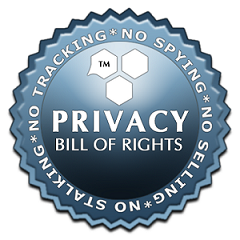
Is 2020 the Year TRON Smart Contracts Come of Age?
Smart Contract Oracle Solutions: the New Herald of Crypto Fundraising
With smart contracts and DeFi gaining traction in droves, and the numbers of new entrants into the ecosystem growing, the smart contract revolution appears to be kicking into gear this year. Recent fundraising successes which bucked the trend of failing token sales in recent years suggest that investors are now looking to projects that seek the remaining piece of the puzzle in functional smart contracts. This week’s 6-hour sellout of the $8,000,000 Bridge Oracle IEO, TRON’s first oracle solution, serves as an example, having tackled directly the problem of injecting reliable, objective and accurate data that most smart contract implementations lack. Not to mention, the project is a TRON first, meaning the network is now empowered to take on the DeFi revolution head-first. TRON is one of the largest blockchain networks that has been specifically coded for speed, reliability, and scalability. The characteristics make it an ideal blockchain for creating and executing smart contracts. With the total value of locked money in DeFi now crossing the USD 8 billion mark, the use of smart contracts is on the rise at unprecedented rates, putting emphasis on how important these digital pacts have become. For TRON, this means a boom. However, like all smart contract platforms, the lack of a public oracle database made it difficult to fulfill the promise of full trustlessness, at least, before Bridge Oracle.
Making Data Reliable
Smart contracts are paperless agreements between different parties that are digitally locked and the coding ensures that the terms are honored. The first party that commissions the work and has to pay out, locks up the agreed amount in the smart contract. The value locked in the contract is then out of the hands of both parties, giving assurance to the receiving one that the first party now cannot back out. As per the agreement, the locked amount can be released in batches upon agreed goals completion to the second party, or completely in one move when the contract agreements have been fulfilled. The first party is also confident that unless the agreed objectives are complete, the receiving party cannot take away the funds. This makes smart contracts trustless and non-custodial in nature, giving both sides a peace of mind. However, there is one shortcoming. For the locked value to be released, the smart contract needs certain inputs. The data can be entered from both parties, with one claiming an objective or target achieved and the other verifying it. What if there is a dispute or the data itself is not accurate? Pandora’s box still wasn’t quite shut.
Bridge: Future Solution, Now
Oracles are now hot in development, especially in 2020, with scripts feeding into transparent yet intact publicly available and reliable data to ensure that information fed into the agreements is accurate and without any tampering, giving smart contracts reliability never before seen. From their recent $8,000,000 IEO, to their incredible development plan, Bridge Oracle looks to revolutionise the execution of smart contracts across the board. Some of the features of the nascent project include:
- Data Transparency: Oracle data that is public, ensuring that it is accurate and not manipulated.
- Multi Sourced: Different data sets are available, giving smart contract parties the option to select a source that is most relevant to their agreements.
- Oracle Marketplace: Organizations and firms can upload their data on the oracle and monetize it. In Bridge’s case, exchanging it for in-house BRG tokens
Bridge Advisor Mate Tokay is one who has publicly acknowledged the efforts to solve this long-standing smart contract problem. The Bitcoin.com co-founder said one issue was to make such a solution accessible to all businesses,
removing the additional hurdle of prohibitive cost:
“Accessing external data for smart contracts will be made easy using the Bridge Oracle. It will help with making smart contracts used by more and more businesses.”
Others like TRON influencer Mike McCarthy and The Currency Analytics CEO Sydney Ifergan have also lent their advisory clout to Bridge, demonstrating that such solutions are attracting interest from a wider segment of industry players. The business coverage in mainstream media like Forbes and Capital Bay News has been equally enthusiastic, with commentators agreeing that the much-needed bridge from the real world to smart contract blockchain platforms may finally be ready. And the players from multiple sectors and industries across finance, banking, insurance, health and logistics will surely be lining up to cross that bridge and use smart contracts for cost efficiency and transparency. Of course, much work needs to be done still to perfect the solution for a fully trustless oracle system for smart contract use, and all eyes will be on the likes of Bridge Oracle, whose mainnet is due in the next quarter of the year. For now, volume on its native BRG token is already picking up on the open market where it is listed on bw.com and Digifinex, suggesting that retail investors as well are betting on the future of oracle-enabled smart contracts.
Article Produced By
Bitcoin Press Release
https://bitcoinprbuzz.com/is-2020-the-year-tron-smart-contracts-come-of-age/
TP

